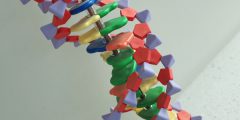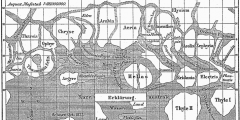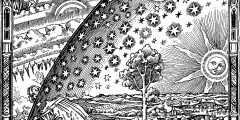Epi-pins: Epigenetics on Pinterest
August 23, 2019
This post has been co-authored with Cath Ennis, University of British Colombia, Vancouver (author of Epigenetics: A Graphic Guide). Cath is a Knowledge Translation Specialist with the University of British Columbia’s Human Early Learning Partnership and the Kobor Lab at BC Children’s Hospital Research Institute. *** Cath and I are interested in how epigenetics is …
The vertical rod in the center of the DNA molecule
May 16, 2018
A while ago I read this tweet by Kindra Crick: “Odile Crick, my grandmother, drew the first published diagram of #DNA It was 65 years ago #onthisday, as a diagram in the first of the three papers published in @nature on the structure of DNA. (Watson & Crick, Wilkins et al, Franklin & Gosling) #SciArt …
Signs and society: The Brexit bus
July 21, 2017
Some years ago, Roda Madziva, a former research fellow on the Making Science Public programme, wrote a blog post about the ‘Go Home Van’. This van combined visibility and mobility to tell migrants in London, framed as illegal criminals, to go home – wherever that might (im)possibly be. Roda and Vivienne Lowndes have also written an …
The mystery of the missing Martians
January 13, 2017
When the present is depressing and the future uncertain, it is sometimes nice to retreat to the past, especially to past futures. I recently tried to distract myself from the present by staring at Venus, Moon and Mars illuminating the evening sky. I then led my eyes wander around the internet and I inadvertently came …
Camille Flammarion: Making science popular
July 22, 2016
Life on this planet is currently crazy, chaotic and confusing. In this context, I was thinking – wouldn’t it be nice to be able to poke one’s head out of the earthly firmament and look at the heavens beyond. This thought popped into my head because I had once seen an image depicting something like …
The colours of biotechnology
October 25, 2015
I have recently been musing about images used to make science public and wondered what images are out there for synthetic biology. I knew that in the past cloning was visually represented by ‘Dolly the sheep’ or ‘armies of little Hitlers’, nano found its visual incarnation in nanobots and fantastic voyage, but what images would …










